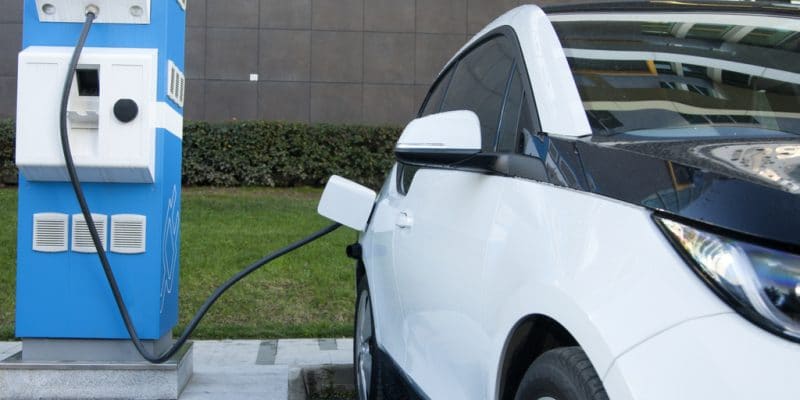Transport issues to address in Africa to accelerate EVs.
A decade ago, the notion that Electric Vehicles (EVs) could be an alternative to popular gas vehicles was unthinkable. Then, electric vehicles were more for research & development projects, and the few that roamed the roads were so expensive that they were exclusive to the rich.


In November 2022, global leaders converged in Egypt to mark the 27th United Nations Climate Change Conference (COP27). A COP on the African continent helps the countries in the region with a much-needed boost on many fronts, including climate finance, adaptation, losses, and damage. Those issues are particularly important to Africa and other developing regions, which have been disproportionately impacted by the effects of climate change.
A decade ago, the notion that Electric Vehicles (EVs) could be an alternative to popular gas vehicles was unthinkable. Then, electric vehicles were more for research & development projects, and the few that roamed the roads were so expensive that they were exclusive to the rich.
However, due to technological advancements, evolving policies, and the growing popularity of EV companies like Jet Motor Company, EVs are now sharing the same roads with conventional vehicles. And some regions already perceived it as the future of transportation.
Last year, over 11 million registered electric vehicles including cars, buses, vans, and trucks were on the road across the world. This number is projected to rise to 145 million by the end of the decade.
EVs Challenges in Africa
Electric vehicles remain rare in most of Africa, the probability of finding one is about one in a million. In South Africa, which is perceived to be the largest EV market on the continent, only 1,000 out of more than 12 million vehicles on its roads are EVs.
Even fewer electric cars are in operation in most other African countries. This is because the most popular vehicles are second-hand cars. To help boost the growth in the continent we need to do a few things and leave some of the bad behaviors. Here are some of them:
i) Stop ‘dumping’ used vehicles in the global South
The dumping of polluting and unroadworthy vehicles in Africa is a major challenge. 40% of the global exports of used light-duty vehicles go to Africa, compared with only 2% of new vehicles. Many of them are of poor quality and would fail roadworthiness tests in the exporting countries. An estimated 80–90% of vehicles imported to Kenya, Ethiopia, and Nigeria are used, this proportion may be even higher in lower-income African countries. A swift transition away from internal combustion engine vehicles in developed countries will mean a flood of unwanted gasoline and diesel cars being exported to Africa—de facto transferring GHG emissions and air pollution from the global North to the global South. In Africa, only South Africa, Egypt, and Sudan have banned used car imports entirely.
ii) Government Policies
However, this might not change soon. Unlike Europe where government policies are forcing automotive markets to embrace more climate-friendly options like Evs, Africa’s governments are more relaxed.
Only one African country, Cape Verde, has taken steps to phase out the sale of internal combustion engine vehicles by targeting an end to imports of such vehicles by 2035.
In comparison, about 17 countries have made similar laws across Asia, Europe, and America. In addition to that, many of the countries pledge to SDGs net-zero greenhouse gas emissions.
iii) Poor Infrastructure – Roads, Electricity, EV chargers
Secondly, even the relatively slow adoption of EVs in Africa faces infrastructural challenges like weak electricity grids, Bad roads, and a lack of public E-chargers.
While grids in Europe have been able to cope with electric mobility, electricity systems in many African countries are already under strain. Frequent blackouts in some countries could limit consumer demand for electric cars, as it cuts off access to transport.
For example, in Nigeria, the average access to electricity is about 12 hours and there are no known public EV charging stations in the country.
Things are a bit better in South Africa. The country is ranked fifth globally in the ratio of public electric vehicle (EV) chargers to electric vehicles in 2020. Only Korea, Chile, Mexico, and the Netherlands have more chargers per EV.
However, that is just one out of 54 countries that are on the continent.
Insufficient charging infrastructure continues to prevent wider use, as does the low supply of appropriate electric vehicles in many sectors, such as heavy industry.
iv) Less than the average cost of living
The cost of EVs has dropped drastically over the years, the advancement in Battery Technology and the huge investment in EV startups have made buying an EV affordable.
However, despite falling battery costs, and the promise of savings over the lifetime of an EV from lower fuel and maintenance costs, the upfront prices remain out of the range of the average Africa.
According to Cox Automotive, the average cost of a new electric vehicle is about $55,600 (N23M). This is way above the average yearly salary of N2M made by the average Nigerian living in Lagos.
v) International cooperation
Most of the upstream capacity to produce e-vehicles, including the metals and minerals extraction industry is already in the global South. There is a need to further explore the potential to adopt a home-grown approach to transport electrification, where EVs are produced in African countries using local materials and labor force. While moving in this direction will require much more international cooperation, it will ensure the economic benefits of transport electrification are shared equitably between developed and developing countries.
Source:
i) Globaltech Africa (2022) Global EV adoption: The reality in Africa may be different
ii) Paul Naumba Um (2022) The top four transport issues to address at COP27




